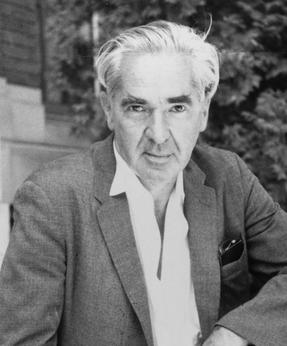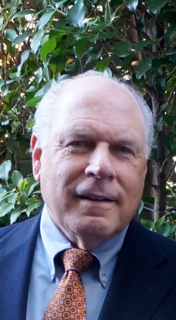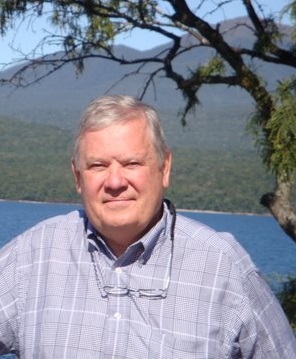Related Research Articles
Founded in 1920, The National Council of Teachers of Mathematics (NCTM) is a professional organization for schoolteachers of mathematics in the United States. One of its goals is to improve the standards of mathematics in education. NCTM holds annual national and regional conferences for teachers and publishes five journals.

Edward Griffith Begle was a mathematician best known for his role as the director of the School Mathematics Study Group (SMSG), the primary group credited for developing what came to be known as The New Math. Begle was a topologist and a researcher in mathematics education who served as a member of the faculty of Stanford University, Princeton University, The University of Michigan, and Yale University. Begle was also elected as the secretary of the American Mathematical Society in 1951, and he held the position for 6 years.

Marjorie Lee Browne was a mathematics educator. She was one of the first African-American women to receive a PhD in mathematics.
William Thomas Fletcher is an American mathematician.
Thomas "Tom" Albert Romberg is Professor Emeritus of Curriculum and Instruction at the School of Education, University of Wisconsin–Madison, and former director of the National Center for Improving Student Learning and Achievement in Mathematics and Science, Wisconsin Center for Education Research.
Zalman Usiskin is an educator best known as the Director of the University of Chicago School Mathematics Project.
Reform mathematics is an approach to mathematics education, particularly in North America. It is based on principles explained in 1989 by the National Council of Teachers of Mathematics (NCTM). The NCTM document Curriculum and Evaluation Standards for School Mathematics (CESSM) set forth a vision for K–12 mathematics education in the United States and Canada. The CESSM recommendations were adopted by many local- and federal-level education agencies during the 1990s. In 2000, the NCTM revised its CESSM with the publication of Principles and Standards for School Mathematics (PSSM). Like those in the first publication, the updated recommendations became the basis for many states' mathematics standards, and the method in textbooks developed by many federally-funded projects. The CESSM de-emphasised manual arithmetic in favor of students developing their own conceptual thinking and problem solving. The PSSM presents a more balanced view, but still has the same emphases.
Lola J. May was a mathematics educator, consultant, author, producer of audio-visual materials, an early proponent of the new math educational process, and a household name among mathematics.
Edward Burger Burger is a mathematician and President Emeritus of Southwestern University in Georgetown, Texas. Previously, he was the Francis Christopher Oakley Third Century Professor of Mathematics at Williams College, and the Robert Foster Cherry Professor for Great Teaching at Baylor University. He also had been named to a single-year-appointment as vice provost of strategic educational initiatives at Baylor University in February 2011. He currently serves as the president and CEO of St. David's Foundation.
Miriam Almaguer Leiva is a Cuban-American mathematician and mathematics educator, the first American Hispanic woman to earn a doctorate in mathematics and mathematics education. She is the Bonnie Cone Distinguished Professor for Teaching Emerita in the Department of Mathematics at the University of North Carolina at Charlotte, and the founder of TODOS: Mathematics for All, an organization devoted to advocacy for and encouragement of Latinx students in mathematics. She is also an author of many secondary-school mathematics textbooks.

Alfred S. Posamentier is an American educator and a lead commentator on American math and science education, regularly contributing to The New York Times and other news publications. He has created original math and science curricula, emphasized the need for increased math and science funding, promulgated criteria by which to select math and science educators, advocated the importance of involving parents in K-12 math and science education, and provided myriad curricular solutions for teaching critical thinking in math.
Ann Elizabeth Fennema was an American educator specializing in the teaching of mathematics.
Glenda T. Lappan is a professor emerita of mathematics at Michigan State University. She is known for her work in mathematics education and in particular for developing the widely used Connected Mathematics curriculum for middle school mathematics in the US.
Carolyn A. Maher has been an elementary school teacher, professor of mathematics at Rutgers University, and editor of The Journal of Mathematical Behavior. She founded and is the director of Robert B. Davis Institute for Learning Editor and founded the Video Mosaic Collaborative.
Gail F. Burrill is a mathematics educator who was president of the National Council of Teachers of Mathematics (NCTM) from 1996 to 1998. She works as a specialist in the Program in Mathematics Education at Michigan State University.
Rachel Levy is an American mathematician and blogger. She currently serves as the inaugural Executive Director of the North Carolina State University Data Science Academy. She was a 2020-21 AAAS Science and Technology Policy Fellow, serving in the United States Senate and sponsored by the American Mathematical Society. From 2018-2020 she served as deputy executive director of the Mathematical Association of America(2018-2020). As a faculty member at Harvey Mudd College from 2007-2019 her research was in applied mathematics, including the mathematical modeling of thin films, and the applications of fluid mechanics to biology. This work was funded by The National Science Foundation, Research Corporation, Howard Hughes Medical Institute, and US Office of Naval Research.
Shirley M. Frye is an American mathematics educator. She is the former president of the National Council of Supervisors of Mathematics and the National Council of Teachers of Mathematics.
Barbara Jean Bestgen Reys is an American mathematics educator known for her research in number sense and mental calculation, for her mathematics textbooks, and for her leadership in developing curriculum standards for elementary school mathematics education. She is Curators Professor Emeritus at the University of Missouri, and a winner of the Lifetime Achievement Award of the National Council of Teachers of Mathematics.
Marta Civil is an American mathematics educator. Her research involves understanding the cultural background of minority schoolchildren, particularly Hispanic and Latina/o students in the Southwestern United States, and using that understanding to promote parent engagement and focus mathematics teaching on students' individual strengths. She is the Roy F. Graesser Endowed Professor at the University of Arizona, where she holds appointments in the department of mathematics, the department of mathematics education, and the department of teaching, learning, and sociocultural studies.

Gary Bitter is an American researcher, teacher, and author focusing on educational technology. He is Professor of Educational Technology and past Executive Director of Technology Based Learning and Research at Arizona State University. He was a founding board member of the International Society for Technology in Education and served as its first elected president. He is the co-author of the National Technology Standards (NETS) which have been used extensively as a model for National and International Technology Standards.
References
- ↑ "Obituary for Lee Vernon Stiff | Lea Funeral Home". www.leafuneralhome.com. Retrieved 2021-11-19.
- ↑ Faculty listing, MSTE, NCSU, retrieved 2011-03-20.
- 1 2 Thompson, Lynn (August 2, 2006), "Why do teens fail math? "It ain't the kids"", Seattle Times .
- 1 2 3 Distinguished Alumni Award Archived 2011-08-13 at the Wayback Machine , NCSU College of Education, retrieved 2011-03-20.
- ↑ Lee Vernon Stiff at the Mathematics Genealogy Project.
- ↑ NCTM past presidents, retrieved 2011-03-20.
- ↑ Hartcollis, Anemona (April 13, 2000), "Math Teachers Back Return Of Education in Basic Skills", New York Times .
- ↑ Greenberger, Scott S. (July 26, 2000), "Educators Adopt New Guidelines for Math", Boston Globe . Reprinted in California Online Mathematics Education Times, Vol. 1, No. 18, July 2000.
- ↑ Flowers, Tanner (March 4, 2008), "Math placement, not background, leaves students behind, professor says", Columbia Missourian .
- ↑ Fulbright directory Archived 2012-08-04 at archive.today , accessed 2011-03-20.
- ↑ "Associate Dean Lee V. Stiff '78 PHD Receives NCTM Lifetime Achievement Award". 2019-01-23. Retrieved 2020-06-10.